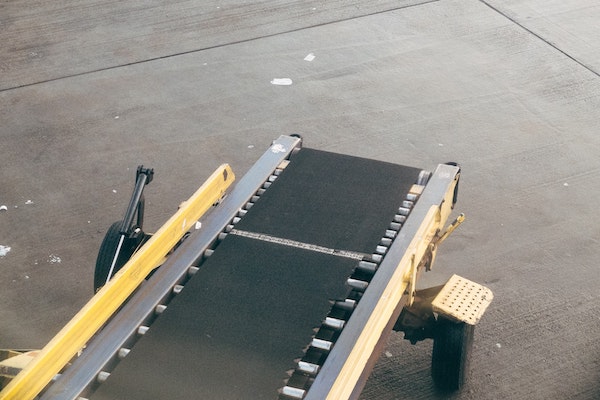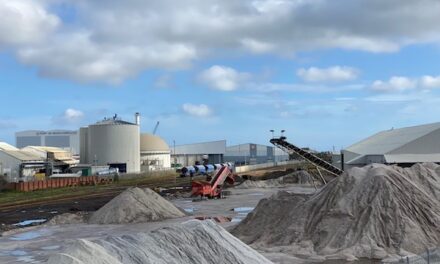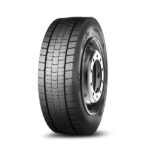A conveyor system can help businesses optimize truck loading for greater efficiency and productivity. The addition of a conveyor system in the loading process minimizes the likelihood of workplace injuries and damages to goods.
These systems are user-friendly, easy to customize and offer many benefits for logistics and trucking companies. Explore the additional benefits of conveyor systems for trucks.
1. Safer Loading and Unloading
One of the main benefits of truck conveyor systems is safer loading and unloading processes. This applies to both loading dock workers and the goods being moved. Conveyor systems streamline the loading and unloading process so manual movement is minimized.
Reducing the amount of manual lifting, pushing, pulling and other movement minimizes the risk of physical injury in the loading process. In fact, overexertion causes at least 22% of workplace injuries requiring time away from work. A conveyor system can help prevent these injuries. Loading dock workers can simply move goods onto the conveyor system rather than going back and forth carrying heavy loads.
Conveyors are beneficial for the goods being transported, as well. A conveyor system can optimize truck loading so the goods experience the minimum movement possible, reducing the likelihood of drops, breaks, spills and other accidents. With so many types of conveyor systems available today, users can customize the system itself for specific goods.
2. Optimize Truck Loading for Efficiency
The loading and unloading process is a critical stage in trucking logistics. It can either be the most efficient step or a major bottleneck. A conveyor system can optimize truck loading and unloading so they are as efficient and quick as possible.
The conveyor system keeps goods moving from stockpiles to trucks in a consistent and timely manner. It is a much more organized system than having a team of loading dock workers manually carrying loads to the truck. Simplifying the loading process ensures it gets done as quickly as possible.
When businesses optimize truck loading for efficiency, it can also lead to higher-quality loading. Since trucking teams now have a more organized loading process thanks to the conveyor system, they can dedicate more attention to truck organization. As a result, goods can be loaded in the safest and most organized configuration possible, which may also improve unloading efficiency.
3. Easy Maintenance for All Types of Conveyor Systems
Maintenance is a major concern for businesses weighing the different types of conveyor systems and their pros and cons. Truck conveyor systems are a valuable investment, so it is important to take things like maintenance into consideration. Luckily, conveyor system service is typically straightforward.
Most conveyor systems require basic maintenance like hydraulic or engine fluid changes. The belt also needs inspected and replaced at regular intervals. However, these service intervals can be 200 hours, 500 hours or even more. Plus, many conveyor systems have maintenance monitoring features that will notify operators when maintenance is required.
Modifications and additional features can also make it easy to get the most out of a truck conveyor system. For example, adding lagging to the roller or pulley can increase the belt life span and improve the performance of the whole system. Lagging allows the traction of the conveyor system to be customized. As a result of this optimization, the conveyor belt can last longer between replacements.
4. Cost Savings From Efficiency Gains
One desirable benefit of investing in any of the various types of conveyor systems is logistics cost savings. This is the result of efficiency gains in the loading and unloading process.
Conveyor systems streamline and simplify the loading process, minimizing the chance of accidents that damage or waste goods. This maximizes the value of each load. Additionally, due to a more organized loading system, truck space can be optimized so every square inch can be fully utilized. By hauling larger and more valuable loads, trucking companies can maximize their profits on every route.
Additionally, conveyor systems can reduce wasted miles and hours. Conveyor systems allow loading to be so efficient that it significantly reduces downtime, resulting in cost savings. For example, one trucking company used conveyor systems to save $750 per hour by reloading their trucks on-site rather than driving back and forth from supply stockpiles.
5. Greater Loading Process Visibility
An important part of improving loading and unloading efficiency is understanding where challenges and bottlenecks are occurring. Over recent years trucking and logistics companies have widely begun adopting new technologies to track key performance indicators so they can address issues and bottlenecks. In fact, surveys predict that 82% of logistics managers will adopt predictive analytics by 2027.
Conveyor systems make it easy to apply data and analytics tools to the loading and unloading processes. Since goods are moving directly and smoothly down a set path along the conveyor belt, it is easy to track loading and unloading metrics. Sensors could measure the quantity of goods going into the truck or the rate at which they are being loaded.
The insights gained from this data allow businesses to improve their visibility of their loading and unloading processes. They can use this information to optimize truck loading based on the unique traits and bottlenecks of their specific system.
Optimize Truck Loading With Conveyor Systems
When businesses invest in a conveyor system, they can optimize their truck loading and unloading processes for efficiency and productivity. Conveyor systems simplify the loading process, reducing the likelihood of injuries and accidents. A high quality conveyor system is also easy to maintain and helps businesses maximize the value of their time and vehicles.
Emily Newton
Editor-in-Chief
Revolutionized









